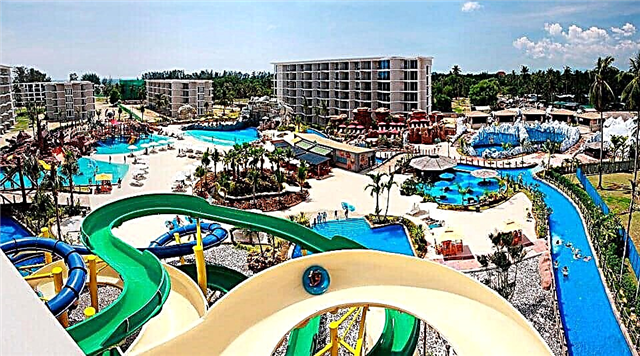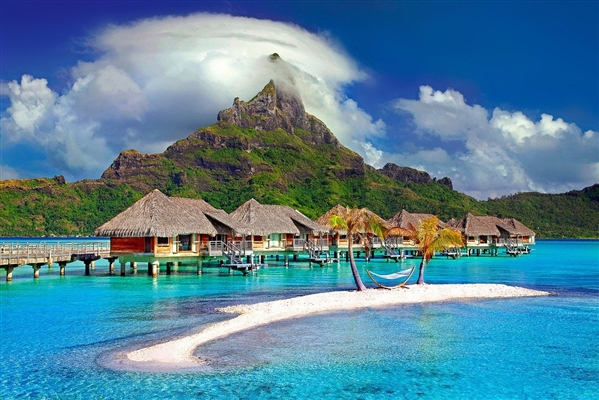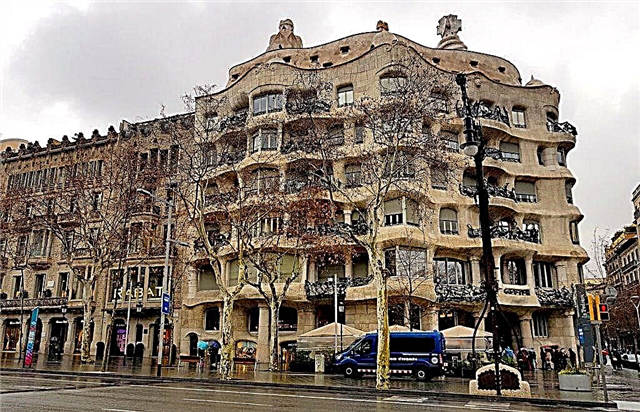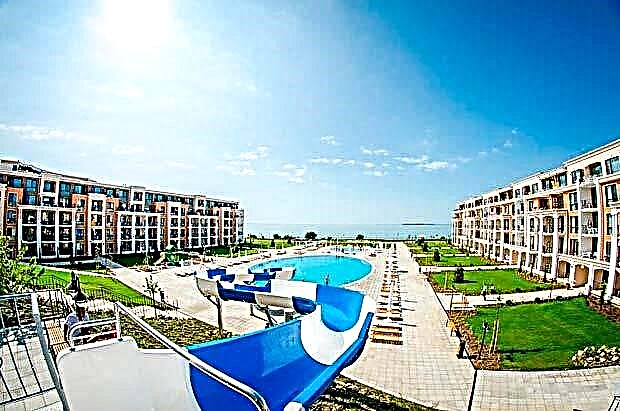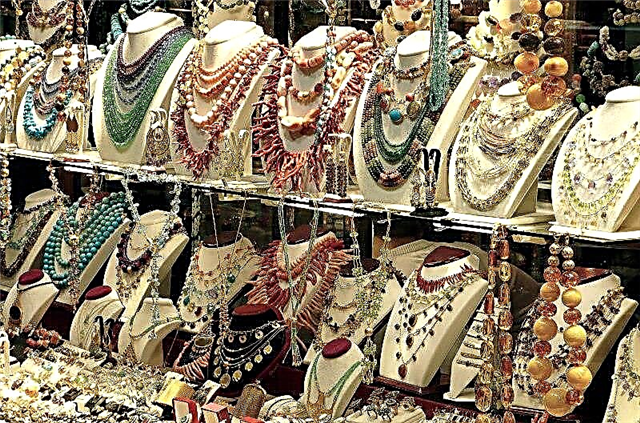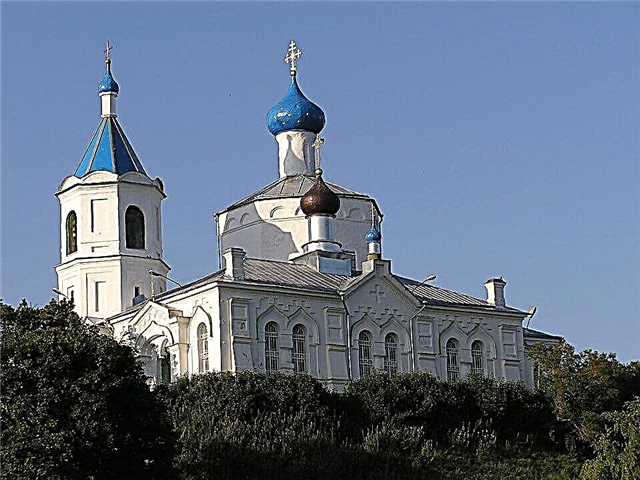Pskov is an ancient city with a rich history, a visit to which leaves a special lasting impression. Its cultural and spiritual heritage, as well as architectural monuments and ancient buildings, together with enchanting nature, create a wonderful ensemble. The land of forests, rivers, picturesque villages and temples is steeped in the atmosphere of the Old Russian Middle Ages. According to the chronicle, the first mention of the city dates back to 903.
Located on the northwestern outskirts of the Russian land, the glorious city had to be raided more than once by Poles, Lithuanians, Swedes and Germans. Despite all the wars and occupations, he fought bravely to preserve his identity. Having decided what to see in Pskov in one day on their own, the guests of the city will get in touch with the true knowledge of the soul of the Russian people and the centuries-old history of building Russian statehood.
Pskov Kremlin

On a high hill between the rivers Velikaya and Pskov, a historical landmark and the main symbol of the city - the Kremlin - rises majestically. An excellent example of defensive architecture is an old unified architectural ensemble, the construction of which began in the 9th century.
Most of the buildings of the fortress have retained their original austere and monumental appearance. During its thousand-year history, a large-scale fortification was attacked by enemy troops more than 25 times.
Impenetrable white-stone powerful walls, hipped-roofed towers, an amazingly beautiful cathedral with a bell tower, various luxurious chambers and a well-groomed spacious inner square of the Kremlin make a grandiose impression. The architectural monument of culture is picturesquely reflected in the water surface of the river.
Trinity Cathedral

The pearl of the Pskov Kremlin is the Holy Trinity Cathedral. Earlier, on the site of the present temple, a wooden church was laid at the behest of Princess Olga in the 10th century. It is noteworthy that by that time Christianity did not yet have the status of an official religion in Russia. The snow-white modern cathedral, which now admires with its beauty, was erected in 1699. A masterpiece of ancient Russian architecture dominates the walls of the fort and is perfectly visible from anywhere in the city. The shrine, rectangular in plan, rises 78 meters high.
The temple is crowned with five domes - the central tent gleams with gilding, the other four bulbs are painted gray. The facade of the church is decorated with protruding vertical ribs, narrow window openings are decorated with platbands and elements of relief stucco molding. The rich interior decoration of the Trinity Cathedral evokes a sense of awe among the parishioners.
The halls are separated by high square columns. The seven-tiered iconostasis with exquisite wooden tracery ornamentation is striking. Its height is 48 meters. The vaults are unusually painted under the starry sky. The temple contains ancient miraculous images and relics of saints.
Dovmont town

Dovmont's town is located at the foot of the hill in front of the Kremlin entrance. Here, from the end of the 13th century, in a small area framed by a wall, there was a unique complex of churches and civil buildings. Thanks to the labor of masons and architects, numerous churches were erected, standing close to each other and under the protection of the Kremlin.
This was due to the fact that the city was often sieged by enemy troops. To build temples outside the fort meant to expose them to ruin and destruction. The cult place is named after the Lithuanian prince Dovmontov, who left his homeland, underwent the holy rite of baptism and conscientiously began to rule the Russian city of Pskov. Later, during the Northern War, Emperor Peter I ordered the installation of a powerful battery, as a result of which part of the territory of Dovmont's city was covered with earthen bastions.
Many churches were buried underground, and the remaining places of worship began to serve as military depots. Today, Dovmont town is the remains of stone foundations of various shapes and sizes, as well as surviving fragments of several churches.
Thunder tower

On the steep bank of the river, covered with trees and grass, the dilapidated Gremyachaya Tower retains its former formidable glory. The six-tier circular limestone structure was part of the city's defensive system, formed in 1525. The height of the tower is 20 meters, the diameter of the base is 15 meters. Historians believe that the building was erected with the participation of an Italian architect. This is evidenced by tower elements characteristic of the Western Middle Ages - a domed vault, loopholes and a system of underground passages.
According to one of the numerous versions, the fort got its current name because of the nearby hill, on which the blacksmiths used to craft. The thundering blows of the masters' hammers literally shook the earth. Several mystical legends are associated with the tower. According to popular legend, a prince's daughter groans underground in a dream, who can be saved from witchcraft by a young man. He must read prayers for 12 nights, after which the girl will wake up.
Spaso-Mirozhsky monastery

In a calm and fertile place of the confluence of the two rivers Velikaya and Mirozha, the ancient Spaso-Mirozhsky monastery rises. The monastery, erected in the XII century, was a true cultural center. On a small territory, immersed in greenery, there was a library, an icon-painting workshop, and a chronicle was kept and the famous work "The Lay of Igor's Campaign" was copied for posterity. The complex of buildings and structures of the monastery is a historical architectural monument.
The Spaso-Preobrazhensky Cathedral deserves attention. The white-stone church, which is cruciform in plan, amazes with its preserved original appearance, which has not changed over all the centuries of its existence. The temple is crowned with an onion dome mounted on a massive drum with narrow high windows. The walls and ceilings of the cathedral are painted with unique frescoes of the pre-Mongol period.
They were made by Greek craftsmen. For a long time, colorful panels were hidden under thick layers of plaster. After a major overhaul, this man-made miracle was discovered, included in the UNESCO World Heritage List.
Snetogorsk monastery

The oldest female Snetogorsk monastery of the Blessed Virgin Mary is the central abode of the Pskov lands, located a few kilometers from the city center. According to the chronicle, the first mention of this holy place is found in manuscripts for 1299. The monastery was repeatedly plundered and destroyed by foreign enemy invaders.
The attacks were motivated by the desire to seize a strategic position on the high bank of the river. Despite the trials that befell the buildings, there were still people who rebuilt the monastery from the ruins. Therefore, the architectural ensemble of the monastery took on very diverse forms.
Snetogorsk monastery consists of cathedrals, church schools, icon painting workshops, as well as residential and business buildings. The most significant object of the monastery is the white-stone church of the Nativity of the Virgin, erected in 1312. The cubic church is decorated with a dome on a drum, which is surrounded by an openwork ornament. Inside the temple there is a unique collection of wall paintings. Beautiful frescoes depict biblical scenes. The painting surprises with images of saints, which are presented humanely without symbolism.
Museum "Two Captains"

For fans of the famous adventure novel "Two Captains", it will be fascinating to visit the museum dedicated to the literary work, as well as the life and work of the author Veniamin Kaverin. The Soviet writer was born and raised in Pskov. The writer's hometown became the prototype of Ensk, which was described in the book.
Museum exhibits are located in the building of the children's and youth library. The place is steeped in romance from the book's gripping chapters. The expositions of the institution allow visitors to plunge into the atmosphere of the events described. Here you can see an airplane propeller blade, a model of a schooner, a ship's steering wheel, many historical photographs, a compass, globes and other items.
V. Kaverin's personal belongings are collected in a separate room. These are manuscripts, drafts, first editions of the novel and reviews. In front of the museum there is a sculptural composition of two captains - Tatarinov and Grigoriev. The figures of the heroes of the work are captured in dynamics. One with a mighty beard seems to be moving out of a block of ice, the other in a pilot's helmet confidently goes to the solution of the task.
Museum "Honey Farm"

In the village of Dubrovka, among a dense forest, there is a real bee kingdom - "Honey Farm". The farm and at the same time an open-air museum attracts all honey lovers with interesting exhibits that give an idea of the traditions, history and culture of beekeeping.
The museum consists of old wooden huts, which recreate the atmosphere of the 19th century peasant life. Here you can see a variety of tools, household items, as well as collections of rare beehives, samovars, irons, craft tools, honey extractors and much more.
In total, there are more than 10 thousand exhibits. On the well-groomed territory of the farm, tasting rooms are equipped, where tourists are given the opportunity to taste delicious Pskov honey products. You will be pleasantly surprised by the abundance of drinks that combine different types of honey with berries, fruits, tea, bread and cheese. For especially curious visitors to the farm, special courses on bee breeding are held.
Pogankin chambers

The complex of the museum-reserve includes original "Pogankin chambers". More than 300 years ago, a powerful and wealthy merchant Sergei Pogankin ordered to erect a universal building for himself, in which residential apartments and warehouse extensions were to be located. As a result, the townspeople saw a classic Russian medieval unified ensemble of buildings with powerful white walls, small windows, wooden hipped roofs and a decorated porch.
Pogankin chambers attract tourists with numerous and varied museum exhibits. The merchant premises display collections of old silver items, church items, unique colorful Pskov icons, all kinds of genuine weapons, picturesque paintings from various schools of art and masterpieces of folk decorative applied art. A large museum exposition is dedicated to the Great Patriotic War.
Order chambers

The only administrative building on the territory of the Kremlin, where the administrative apparatus of the voivodeship sat, was called the Order Chambers. The 17th century building is a two-story white rectangular building made of limestone slabs with powerful walls, a hipped roof, a massive stone porch and a high staircase.
The chambers were divided into five departments, each of which performed its own tasks and decided the fate of the Pskovites. It also housed the office "tables" of the embassy, finance, land, army and court. The premises recreate the original working environment of the governor and officials of the Middle Ages.
Menshikov Chambers

In one of the central districts, there is a stone architectural ensemble built in the second half of the 17th century. These are the chambers of the zemstvo headman Semyon Menshikov, who was one of the richest and most influential merchants of the Pskov lands.
The complex consists of separate stone three-storey and two-storey buildings, the facades of which are decorated with a porch with columns, small window openings with ornamented platbands and wide staircases. The merchants' mansions are interconnected by an underground passage. The lower floors of the buildings served as storage rooms, while the upper vast halls were intended for receiving guests and entertaining the owners.
Victory Square

Located on the western outskirts of the Russian land, it turned out to be one of the first cities occupied by the fascist invaders. In the surrounding lands, popular partisan detachments were created, which, by virtue of their capabilities, heroically fought against the enemy. Only in the summer of 1944 was the city liberated from the Germans. Victory Square in the central region reminds of the exploits of Soviet soldiers and the triumphant end of the Great Patriotic War.
In the well-groomed park area, you can see the alley of the heroes of Pskov, the "Eternal Flame", memorial steles with bas-relief images, as well as the Tomb of the Unknown Soldier, over which a monumental composition of anti-aircraft guns directed upwards rises.
Monument "Battle on the Ice"

On Mount Sokolikha, among the picturesque endless fields, a majestic sculptural composition rises, attracting the attention of tourists. This is the famous monument "Battle on the Ice", which embodies the important historical period of the Pskov lands. The monument is dedicated to the squad of Prince Alexander Nevsky, who defeated the troops of the Livonian knights who captured a number of Russian cities in the middle of the 13th century.
The opening of the memorial took place in 1993. It is noteworthy that the statue was erected a hundred kilometers from the real place of the battle. The 30-meter-high monument impresses with its scale and strikes with its artistic design. The central composition of the sculpture is the equestrian figure of Alexander Nevsky with a shield and a sword.
The prince was surrounded by his loyal companions. These are warriors, dressed in chain mail and helmets, as well as an old man, a city craftsman and a kneeling peasant. Against the background of the blue sky and snow-white clouds, the spears and the banner of the heroes of the fatherland rise upward. The monument reflects the strength and might of the Russian state.
Monument to the 6th company

In the village of Cheryokha, there is a memorable monument dedicated to the heroically killed soldiers of the sixth paratrooper company in the second Chechen campaign in 2000. A detachment of Pskov paratroopers took an unequal battle at an altitude of 776 meters in the Argun Gorge with large enemy forces. The basis of the sculptural monument is a parachute. A metal dome with steel slings is installed on a pedestal shaped like a mountain peak. In the center 84 long candles are directed upwards. Their number corresponds to the number of soldiers who died courageously.
At the foot of the monument there are granite slabs with the names and surnames of the paratroopers engraved on them. In the inner part of the canopy of the parachute, you can see copies of the autographs of all the fighters. The building is crowned with the star of the Hero of Russia.
"Golden Embankment"

Along the bank of the river there is a magnificent embankment, immodestly called by the people Golden. The place attracts the attention of tourists with beautiful hotel complexes built in the architectural style of the 19th century. Colorful facades of buildings with decorative elements give the quarter a noble aristocratic ambiance. On the other bank, opposite the palace ensemble lined up in a row, the majestic buildings of the Pskov Kremlin rise.
The ennobled territory of the "golden embankment" contributes to an ideal pleasant walk. The street, paved with decorative tiles, has lanterns and comfortable benches, as well as tall broad-leaved trees and flower beds.




